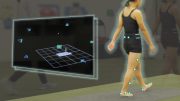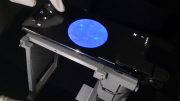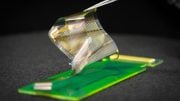
The researchers think that their methods provide a viable pathway for nationwide health risk screening.
Researchers conclude that passive smartphone tracking of walking activity at the population level offers a way to implement national health and mortality risk screening.
According to a new study conducted by Bruce Schatz of the University of Illinois at Urbana-Champaign and colleagues, passive smartphone monitoring of people’s walking activity can be used to create population-level models of health and mortality risk. The research, which found that smartphone sensors could accurately predict an individual’s 5-year risk of mortality, was recently published in the journal PLOS Digital Health.
Previous research has employed physical fitness tests and self-reported walk speeds to estimate mortality risk for specific individuals. These measures focus on movement quality rather than quantity; for example, assessing an individual’s gait speed has become routine practice in some clinical settings. The rise of passive smartphone activity monitoring makes population-level analysis utilizing similar metrics possible.

Measuring health with a carried smartphone, from the characteristic motion of the human body computed from a phone sensor. Credit: Qian Cheng (CC-BY 4.0)
In the new study, researchers studied 100,000 participants in the UK Biobank national cohort who wore activity monitors with motion sensors for 1 week. While the wrist sensor is worn differently than how smartphone sensors are carried, their motion sensors can both be used to extract information on walking intensity from short bursts of walking—a daily living version of a walk test.
The team was able to successfully validate predictive models of mortality risk using only 6 minutes per day of steady walking collected by the sensor, combined with traditional demographic characteristics. Using the passively collected data, researchers were able to calculate the equivalent of gait speed. This value was a predictor of 5-year mortality independent of age and sex with an accuracy of about 70% (pooled C-index 0.72). The predictive models used only walking intensity to simulate smartphone monitors.
“Our results show passive measures with motion sensors can achieve similar accuracy to active measures of gait speed and walk pace,” the authors say. “Our scalable methods offer a feasible pathway towards national screening for health risk.”
Schatz adds, “I have spent a decade using cheap phones for clinical models of health status. These have now been tested on the largest national cohort to predict life expectancy at population scale.”
Reference: “Population analysis of mortality risk: Predictive models from passive monitors using motion sensors for 100,000 UK Biobank participants” by Haowen Zhou, Ruoqing Zhu, Anita Ung and Bruce Schatz, 20 October 2022, PLOS Digital Health.
DOI: 10.1371/journal.pdig.0000045









Be the first to comment on "New Research Demonstrates That a Smartphone Can Accurately Predict Your Risk of Death"